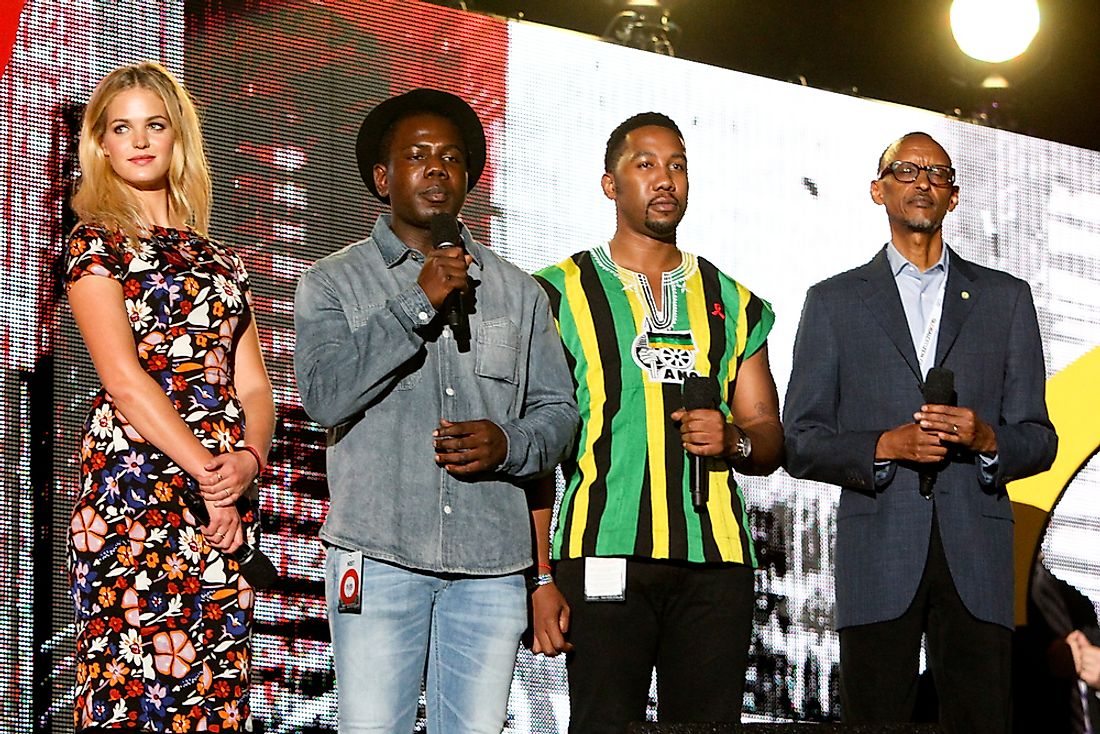Who is the President of Rwanda?

Who is the Current President of Rwanda?
Paul Kagame is the current president of Rwanda after his third re-election on August 4, 2017. He came into office in 2000 after Pasteur Bizimungu stepped down following the Rwandan Genocide of 1994. Having fought alongside the Uganda President Museveni against the dictator Idi Amin, Kagame enrolled as a fighter in the Rwandan Patriotic Front (RPF), a group that took their fight to Rwanda in 1990. Fred Rwigyema who was the leader died at the initial stage of the fight, leaving the control to Kagame. A ceasefire agreement was reached in 1993 but the assassination of the Juvenal Habyarimana, the Rwandan President, marked the start of the genocide that led to the loss of more than one million lives. Kagame staged a successful military war that put an end to the genocide.
Early Life
Kagame was the last born in a family of six on October 23, 1957, in Tambwe. He attended a school adjacent to a refugee camp in Uganda where his family had sorted shelter after the majority Hutsi community targeted Tutsis in their killings. Kagame learned English and was assimilated into the Ugandan culture. He left to Rwengoro Primary School at the age of nine and after his graduation, Kagame joined one of the prestigious school, Ntare, however, he was later expelled. He completed his schooling at Old Kampala Secondary School and afterward made frequent trips to Rwanda.
Military Career
Upon Fred Rwigyema’s return in 1978, he and Kagame joined hands with Museveni to fight Idi Amin. Amin was defeated which paved the way for the formation of the transition government under the leadership of Milton Obote. In the 1980 General election in Uganda, Obote won but Museveni did not accept the results; instead he formed another rebel group called National Resistance Army (NRA) with the help of his close friends Rwigyema and Kagame. The main reason was to bring down the government of Obote and partly to secure the freedom of the Rwandan refugees forcefully detained by Obote. Kagame became the chief officer responsible for the collection of intelligence. After a five-year fight, NRA succeeded in overthrowing Obote and formed a government in which Kagame was among the highly ranked military officers.
Immediately after arriving from the United States where he had gone to study, Kagame joined Rwandan Patriotic Front which was led by Rwigyema before his death. Kagame once again fought against the government forces who were selectively killing the Tutsi community and took control of Rwanda in July 1994.
Presidency
After President Bizimungu stepped down in March 2000, the Supreme Court gave orders that allowed Kagame to take over as the acting president. Kagame later chose to run for the presidency which he won and was sworn in officially on April 2000. He immediately embarked on drafting and promulgating the new constitution that caters for Rwandan's needs. The Rwanda people accepted the Constitution through their votes in the 2003 referendum with 93% of the total votes cast.
As the president, he launched the vision 2020 which aimed to unite the people and develop the country economically. Consequently, Rwanda’s economy is reported to have grown at a higher rate than expected and it was estimated at $1,592 in 2013. The Kagame government offers free education from primary to secondary school in all public institutions. He has also improved the health status of the community by increasing the health budget, establishing health training, and ensuring that every Rwandan has health insurance by making it compulsory.











